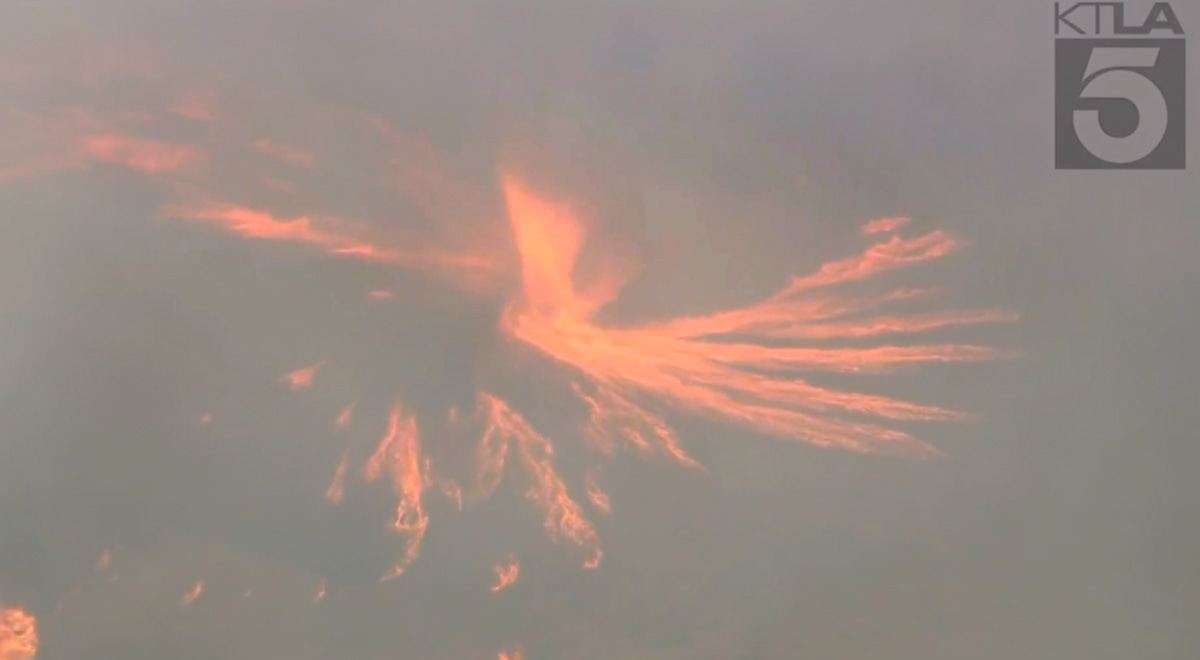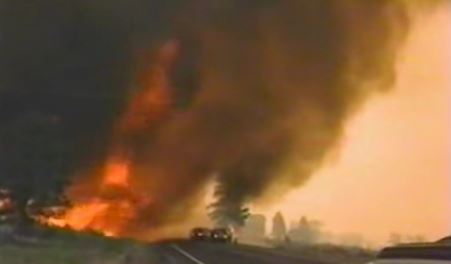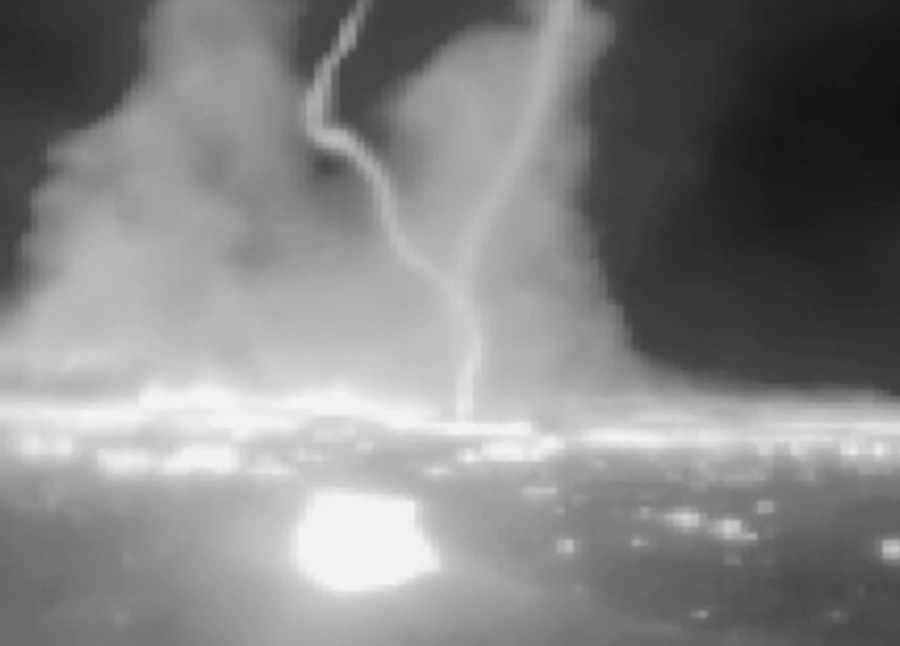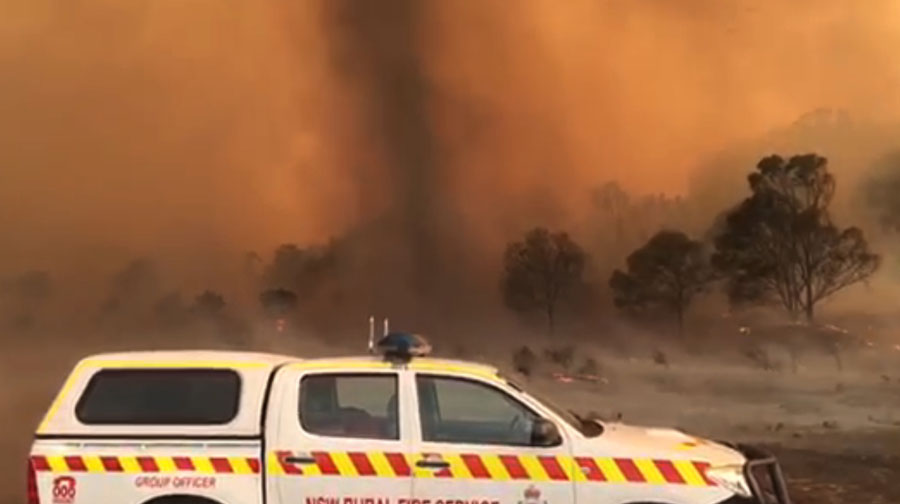
On August 11 we wrote about an impressive fire whirl (or fire tornado) that occurred on the Sam Fire in northwestern Los Angeles County August 10. Thankfully a helicopter from KTLA 5 was airborne and got compelling video, including a water drop from an Air-Crane helicopter that at least for a few seconds took most of the energy out of the rapidly rotating vortex of flame.
Here is the video:
Unfortunately the video stops immediately after the water drop so it is unknown if it regenerated.
In describing the event, we wrote, “Maybe a helicopter pilot can tell us how ballsy it was, or was not, to fly close enough to drop water on the fire whirl.”
Now we know who made the drop.
Erickson’s Pilot in Command flying the Air-Crane that is seen dropping water, Ed Montgomery, was quoted in Erickson Incorporated’s Twitter feed, @EricksonInc. Below is the text from a series of six tweets:
What I can tell you is that those types of situations are very intense, for not only the aircraft on the fire but also for the firefighters that are on the ground. Fire tornadoes can and often do throw fire balls out in front of the fire and the threat in this particular instance, was that the highway was the fire line, and the tornado was approaching the highway. If it had been allowed to advance it would have certainly spotted fire across the highway and turned a 140 acre fire into a much larger incident.
We were fortunate to have had N163AC as our aircraft – it has our new composite blades installed and we were at the last quarter of our fuel cycle. This means we were able to pick up 2,300 gallons of water for that drop.
As you can see from the video, fire tornadoes create a tremendous amount of inward air flow to its core. All I really needed to do was get in front of it while it was in the open, be away from the heat column, and high enough for the tornado to suck the entire water drop into its core.
The phenomenon was either a fire whirl or fire tornado. It is difficult to tell from the video the width or height of the vortex. It appears not to be huge, but the speed of the rotation was extremely swift and the area influenced by the strong indrafts was very large. At the one minute mark check out the spot fires that ignite and instantly grow much larger as they are drawn toward the vortex.
Fire whirls, much like dust devils, are not uncommon on a fire when the atmosphere is unstable, and are much smaller than fire tornados. In 1978 a researcher for the National Weather Service in Missoula, David W. Goens, established parameters for the two.
He said the average size of a fire whirl is usually 33 to 100 feet, with rotational velocities of 22 to 67 MPH.
But a fire tornado dominates the large scale fire dynamics. They lead to extreme hazard and control problems. In size, they average 100 to 1,000 feet in diameter and have rotational velocities up to 90 MPH.






